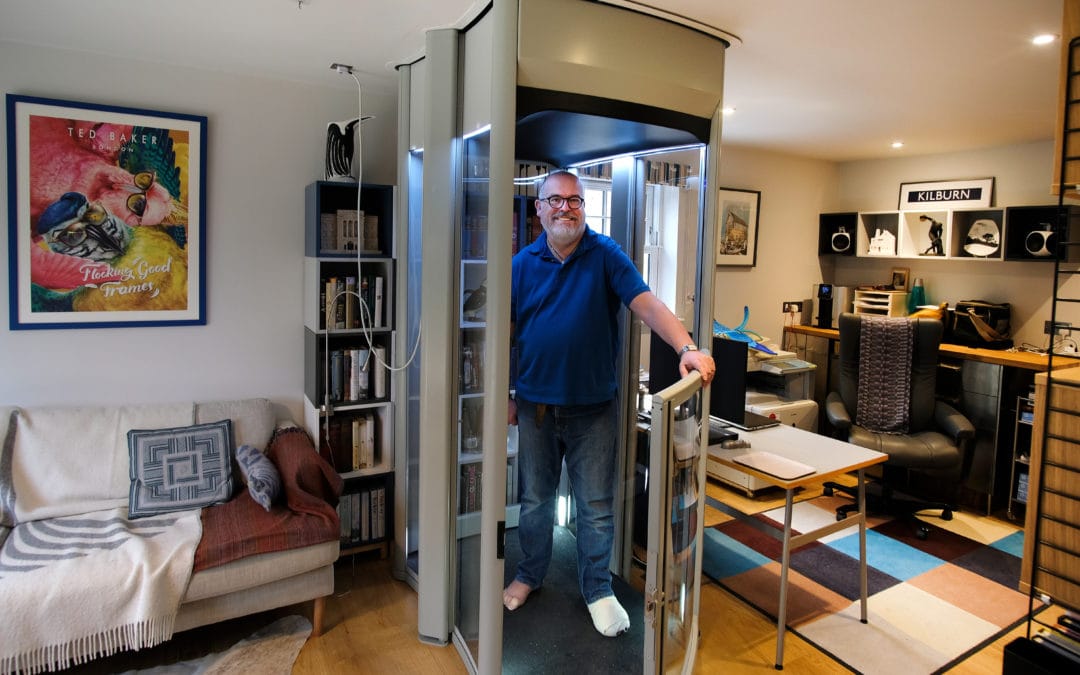Technology that supports personal health, fitness and mobility is one of the fastest growing industries of the modern day. Millennials may be the early adopters of much of this technology but here, at the Home Lift Experts, we look at how it can be put to best use to help the baby-boom generation as they grow older and the need to stay fit, healthy and mobile grows in importance.
1. Fitness trackers
Since the advent of Fitbits, watches that have the technology to monitor your steps, exercise, and heart rate, there are many other fitness trackers on the market. The main benefit of such wearable technology is that you can set goals, and make sure that you stay on target with those goals. These can encourage you to walk further if you have not hit your quota of steps for the day, or remind you to go for a jog, but mostly they keep your fitness at front of mind, making sure you stay as healthy as you can.
2. Home gym
The thrice-weekly trip to the gym will help to keep you in tip-top health, but so often the thought of getting to the gym, changing, and travelling home again is enough to put you off, along with the often rising costs of gym membership. Luckily treadmills, exercise bikes, rowing machines and cross-trainers are not only becoming more technically advanced and able to run programmes tailored for your needs, but they are also becoming more affordable to private owners, making it possible to have the equipment you need in your own home for you to use whenever is convenient for you. Select the type of exercise machine which suits your needs, and feel your strength and stamina build up over time.
3. Blood sugar monitors
Medical technology is one of the fastest moving industries, as there is an ever growing demand. Diabetes is one of the most notable conditions that can benefit from monitoring technology. Wearable CGMs which continuously monitor blood glucose, or flash glucose monitoring systems which need to be manually scanned by a hand held device can instantly show blood sugar readings, helping those with type 1 and type 2 diabetes balance their medications with food and exercise. However, as type 2 diabetes is on the increase, there is a growing trend for non-diabetics to use wearable sensors to monitor their own sugar spikes to keep an eye on their risk of developing the condition. As older people often have a heightened risk of developing type 2, occasional use of a monitor over a two week period will help to show if blood sugars are creeping up, indicating pre-diabetes or the start of type 2.
4. Home lifts
The technology behind home mobility devices has had somewhat of a revolution in recent years. Home lifts are a perfect example of this: far from the medical-looking equipment they used to be, modern domestic lifts are now available with attractive state-of-the-art style, able to blend in to any interior.
There are many designs of home lift to choose from with additional features like lighting, optional seating, or a range of finishes to suit the style of every home.
These advances in the technology making lifts compact, sleek, nearly silent, simple to install and able to plug into a normal mains socket means that home lifts can be installed in nearly any home. This can only be good news for older people who are suffering from mobility issues, making the dream of complete accessibility a reality. Home lifts are also great for future-proofing your home.
5. Apps to monitor lifestyle
Smart phones have a wealth of unused technology that can really help us all keep on track with a healthy lifestyle. There are hundreds of apps that can be downloaded to assist with whichever issue you need to monitor. There are apps that can be used to record daily alcohol intake, to help you make sure you don’t exceed your personal limit, apps to record medication taken and remind when to take them and when to order a prescription. There are apps which can record how much sleep you are having, and the quality of the sleep, as well as apps which can take you through guided meditation and mindfulness journeys to help reduce stress and lower blood pressure.


Recent Comments